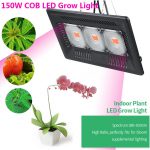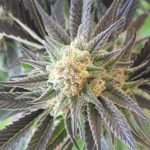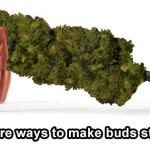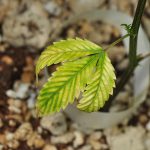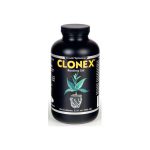Marijuana is a plant that needs lots of attention from the initial vegetation stage to the flowering phase. Although cannabis can technically grow outdoors, growers need some skills to cultivate this plant the right way. Fortunately, people have been growing weed for many years and have perfected the growing process. There are thousands of cannabis phenotypes and strains and each has a unique growing process.
Knowing how to grow one cannabis strain does not mean that you know how to grow all of them. Every plant develops differently and will react distinctively to humidity, water, and nutrients. Throughout the cannabis cultivation process, growers should pay close attention to plant deficiencies, diseases, bugs, and even the grow room climate.
The most common problem that many beginners and novice cannabis growers deal with is nutrient burn. Marijuana plants like to eat and sometimes, they feed more than they require. This article will look at nutrient burn in cannabis plants and ways that growers can detect this phenomenon and ways of avoiding it.
What is Nutrient Burn in Cannabis Plants?

Nutrient burn is possibly one of the common ailments that occur when growing weed crops. Nutrient burn or overfeeding mainly happens when the soil contains too many nutrients or salts. This can arise when there is excess decaying matter or the grower adds too many nutrients to the soil or growing medium. Nutrient burn is mainly brought about by overfeeding the marijuana plants or mixing of nutrients.
Overfeeding is a mistake that many beginner growers experience. Most people may believe that an excess of nutrients is good for marijuana plants. However, nutrient burn can damage cannabis plants in every stage of their growing process. Although nutrient burn can totally destroy the final product of cannabis plants, the situation can be salvaged if caught early enough.
Nutrient burn results from excess plant nutrients in the soil or growth media. Because of the overabundance of nutrients that cannabis plants cannot utilize, the tips of the leaves will become brown or yellow. If not treated, nutrient burn can cause leaves to dry and become brittle and your cannabis plants will have a burnt look. Although you cannot treat the leaves that are already showing signs of excessive nutrients, you can stop this problem to avoid further health issues that may threaten your marijuana plants.
The Signs of Nutrient Burn in Cannabis Plants
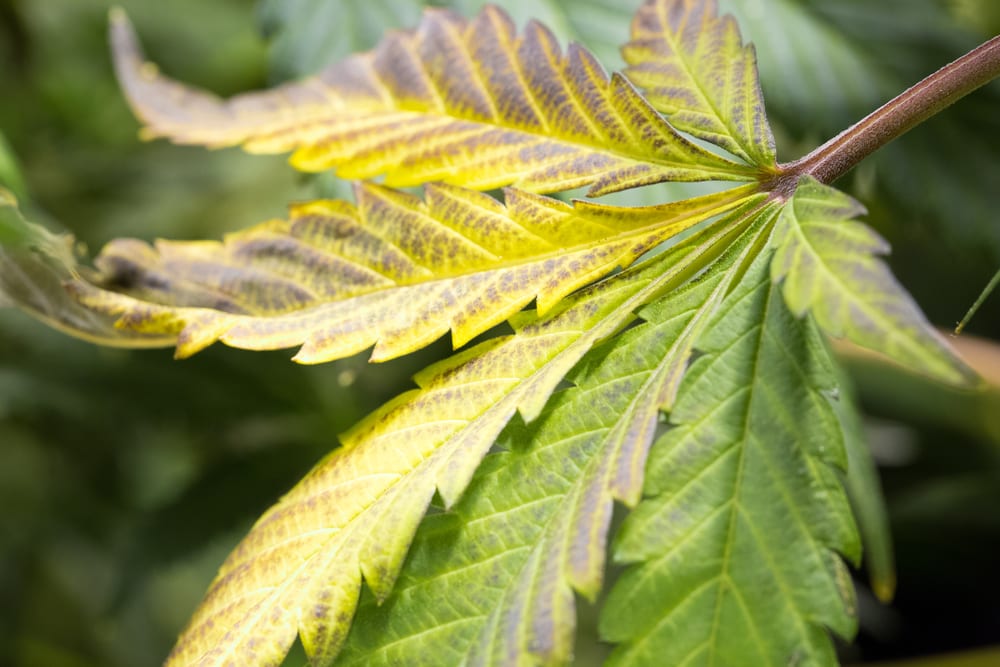
Just like other nutrient deficiencies, the effects of nutrient burn on your cannabis plants will show on the leaves. With overfeeding, you will notice the tip of leaves starting to turn bright green, yellow, and finally brown. This observation is simply the development of a nutrient lockout, meaning that the cannabis plant is unable to intake any nutrients because the soil is extremely saturated. If no action is taken, the yellowing grows from the tip of the leaves towards the center. Eventually, the yellow sections will all turn brown and claw or curl up.
Signs of Nutrient Burn in marijuana plants:
- Your cannabis plant leaves will acquire a deep green color
- The tips of the leaves will then become bright green and somewhat translucent
- The tip of your leaves will bend or curl to a 90-degree angle
- Sugar leaves will become yellow from the tips and start dying quickly
- Bronze or brown spotting will occur on the edges of the plants’ leave serrations
- The stalks and branches of the weed plant may become purple, deep red, or magenta
The symptom of nutrient burn or buildup enables cannabis cultivators to detect the problem easily and act accordingly. Nutrient buildup does not guarantee the death of a plant, however, it sets cannabis crops down this path. This is why cannabis growers should pay close attention to their plants throughout the growing process.
If you suspect your cannabis plants have nutrient burn, the crucial signs that you should look out for are large yellow spots that appear burnt. Most growers may think this is a symptom of excess light, but this is not the case. When nutrient burn is detected early, it can help save the whole cannabis harvest from failing.
Nutrient burn in cannabis plants can be gradual if the nutrient overdose is slightly stronger. This phenomenon can also appear rapidly and progress for a few days. A chronic overdose will cause yellowing and wilting of the whole crop and make the leaves to curl or lose turgidity.
Nutrient burn can also affect the smell and taste of cannabis buds. During the flowering stage, cannabis plants tend to change the way it utilizes nutrients. The nitrogen needs will drop to almost zero and the demand for other compounds like magnesium and calcium will increase. An overdose of any type of nutrient or additive will still cause the same signs of burning.
Read next: Magnesium Deficiency Cannabis
Nutrient Burn Can Have Dire Consequences During The Flowering Stage
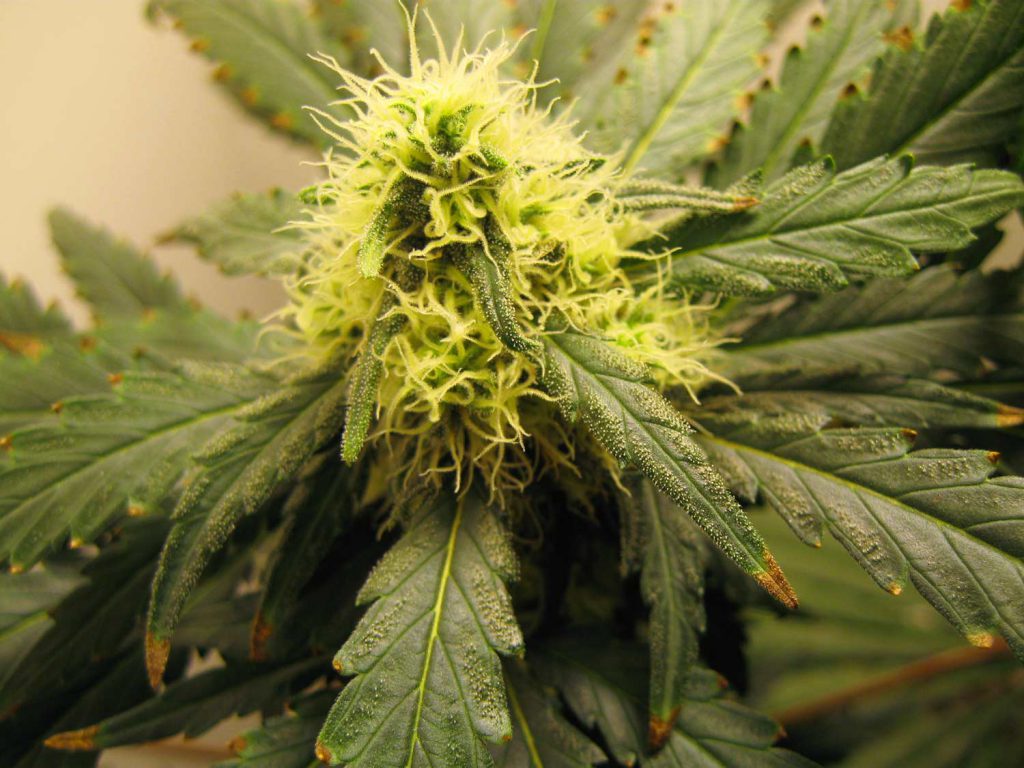
Cannabis crops spend the initial part of their life in the vegetative phase. However, as they enter the flowering stage, the weed plant stops focusing on making stems and leaves and concentrate more on producing buds and flowers. During the flowering stage, the cannabis plants are most vulnerable because they lack the ability to bounce back from any issues they are experiencing.
As the cannabis plant gets further into the flowering phase and closer to harvesting, the less likely it will replace leaves that are damaged or dead. As the plant gets closer to harvest, it stops making an effort to recover damaged leaves and completely focuses on fattening cannabis buds. This is why cannabis plants that are budding require additional care for them to thrive.
A little nutrient burn during the flowering stage may be okay; however, excess nutrient burn can significantly affect your yields because the cannabis plant will not recover itself. Growers who add nutrients to water can easily burn their cannabis plants during the flowering stage even with levels of nutrients that they tolerated before. To keep the risks low, you should always start with a lower dosage of what is recommended for specific types of nutrients.
BUY CANNABIS NUTRIENTS FROM HERE
Why Should Growers Prevent Cannabis From Getting Nutrient Burn?
Most growers do not know that less is more and will strive to give their weed plants the highest concentration of nutrients possible. This is because they believe that nutrients are just like food for marijuana plants and more food translates to more energy and then bigger yields. However, this is wrong, because nutrients are like multi-vitamins for your weed plants.
The same way that you cannot give 10 different multivitamins daily to a child to help them grow faster and healthier, is the same way you should treat your cannabis plants. You cannot expect anything good to come out of your plants if you give them 10x the regular dose of nutrients. Cannabis plants require light more because it produces energy through photosynthesis, which is more effective when cannabis plants have green, healthy leaves.
The leaves of your cannabis plants are like your solar panels and energy and food produced by plants are utilized by the whole plant. Therefore, your leaves must always be in perfect condition to produce the most energy from light. This way, your cannabis plants will have adequate energy supply to grow healthy and produce quality buds. One of the major problems will nutrient burn is the fact that you will be losing leaf mass and the overall sturdiness of your marijuana plant.
A minor case of nutrient burn will not affect your cannabis plants much. However, if the problem is not addressed, you will start losing serious leaf mass and will drastically slow down the growth of cannabis plants and lower the overall yields. Furthermore, if excess nutrients are flushed out of the system of your plant before harvest, the flower buds will also contain trace quantities of the extra nutrients. This will give your buds an unpleasant chemical taste that will lower the quality of your yield.
Causes of Nutrient Burn in Cannabis Plants
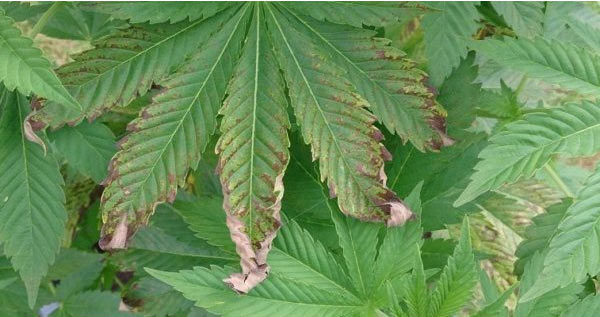
The main cause of nutrient burn in cannabis plants is overfeeding. Based on the kind of cultivation you are using, growers can cause nutrient burn in different ways. Whether cannabis growers utilize liquid nutrients or pre-mix the soil, nutrient burn is a potential threat in both cases.
Although some growing techniques leave room for human errors compared to others, excess nutrition is still a possibility. Unlike animals, plants will not add weight when overfed. Cannabis plants need a balanced and continuous series of chemical reactions for them to thrive and survive. Unlike animals, plants cannot be fatted up by giving them excess nutrients.
The common factors that can cause nutrient burn in cannabis include:
- Mixing stronger concentrations of nutrients than recommended during any stage of growth
- Utilizing growth stimulants quite often can trigger an excessive intake of nutrients and cause burning or dwarfism
- Overwatering plants will hinder them from accessing adequate concentrations of oxygen
- Nitrogen toxicity
- Using bloom boosters in very high concentrations or quite often can trigger an excessive intake of plant nutrients
All these causes of nutrient burn in cannabis can be balanced or prevented all through the growing process. This is why nutrient burn does not translate to the death of plants but necessitates immediate care. Remedying nutrient burn is not an easy task, however, by understanding how this condition occurs, cannabis cultivators can know how to fix the entire problem.
Novice cultivators can benefit immensely from knowing how to prevent nutrient burn. Nutrient burn does not have a chance of becoming a nasty problem if it is detected and dealt with early.
How to Treat Nutrient Burn in Marijuana Plants
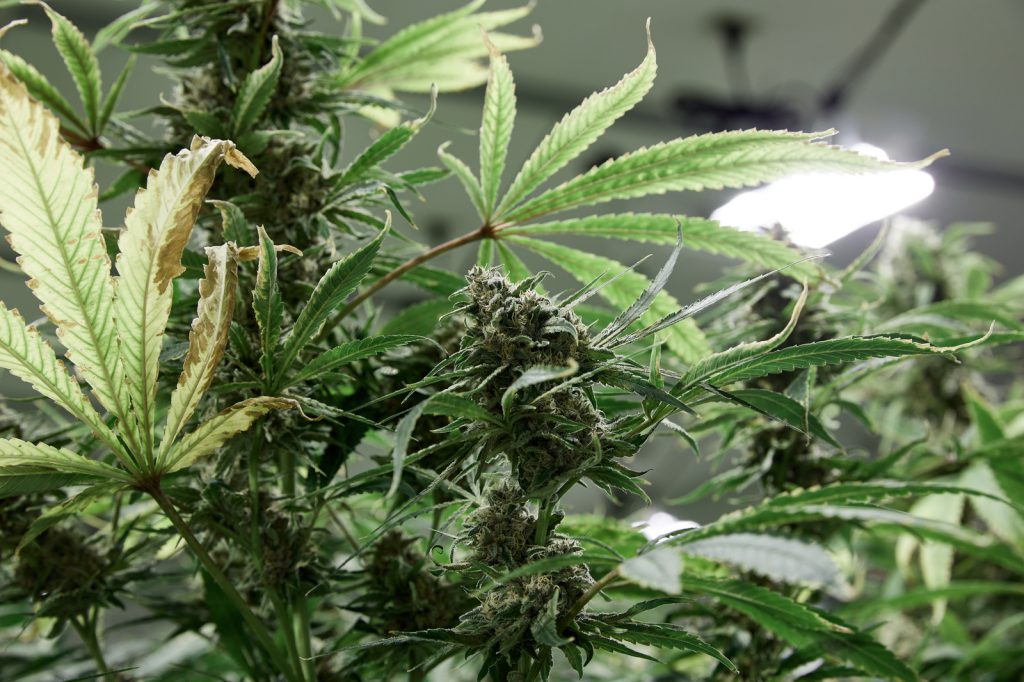
Nutrient burn may occur in any phase of the cannabis growing process and is quite severe and devastating if it occurs during the flowering process. Therefore, it is best for cannabis cultivators handle any problem during the vegetation phase and not the flowering stage. If nutrient burn is not remedied early, it may destroy the leaves and health of the whole marijuana plant. To fix nutrient burn in marijuana, there are steps that growers can take to correct this problem.
-
Stop feeding your Cannabis plants
You should avoid feeding the plant for a few days. You should first check the nutrients and dosages that you have been feeding your marijuana plants. If you opt for the manual watering system, then you should flush your grow media or soil with pH-balanced, clean water. Flushing works by eliminating any excess nutrients and helps to balance out your plants. For hydro systems, you should add plain pH balanced water to help dilute nutrients in the mix. You can also create a new mixture that contains low levels of nutrients.
-
Give Marijuana Plants Appropriate Nutrients
When dealing with nutrient burn, you must ensure that your plants are getting the right type of nutrients based on their growing stage. Cannabis nutrients are usually available in a range of formulations that suit every growth phase. Ensure that you give your weed plants the right kind of nutrients to avoid nutrient burn.
[amazon bestseller=”cannabis nutrients”]-
Trim the old leaves affected by nutrient burn.
These old and burnt leaves are completely destroyed and will not regrow. Removing these leaves will prevent them from rotting while still attached to the plant and they will not affect the overall health of your plant. Furthermore, you will not keep mistaking old, burnt leaves as a new nutrient burn.
-
Reduce nutrient levels
Reduce the nutrient levels by about 25 to 50% before you put your cannabis plants on a new feeding schedule. This way, your plants will not get excess nutrients again. Dealing with a nitrogen deficiency caused by lower nutrient levels is much better than the adverse effects of nutrient burn.
Nutrient burn can occur regardless of whether a grower is a veteran or beginner. Luckily, this problem should not cause you any headaches. Once you spot the signs of nutrient burn, you can quickly resolve the problem and allow your plants to grow and develop healthily again.
Prevention of Nutrient Burn in Marijuana Plants
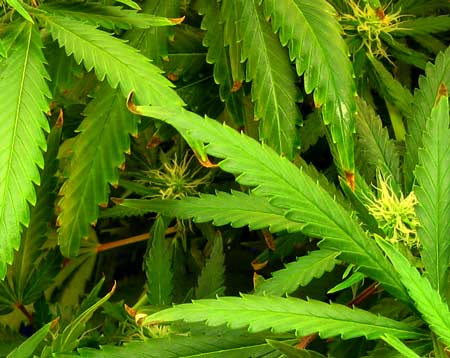
When it comes to nutrient burn, prevention is always the best remedy. Therefore, cannabis growers should develop good habits that will lower the chances of making any mistakes.
The best way to prevent nutrient burn as a cannabis grower is to educate yourself regarding the appropriate nutrient mix for your crops during the various stages of growth. This will ensure that you give your crops the right amounts of nutrients for every stage of growth and will lower the likelihood of dealing with nutrient burn.
Ensure that you use the right nutrients that are appropriate for a specific growth stage. It is best to only use just ¾ of the recommended dosage on plant products. This will help to prevent excessive nutrients supply on your growth medium.
Utilize an EC/pH meter to confirm the nutrient strength in hydro reservoirs or hand mixing daily. You should take corrective measures whenever you notice the concentration of nutrients is increasing or exceeding the recommended levels. Hydroponic systems, soils, and grow mediums should be flushed to help prevent a buildup of salts around the root zone. This will ensure that the problem is handled before plants become stress and show symptoms of nutrient burn.
To correctly measure nutrient supplements for your marijuana plants, you should utilize a measuring device that has a set capacity. This will help you to eliminate human error as much as possible. Misreading measuring lines on a cup or jug is easy and may cause an overdose.
[amazon bestseller=”ph meter”]The Bottom Line
Nutrient burn serious issue that affects many beginner growers. If not addressed, this problem can cause stunted growth and substantially lower yields. It is always best to avoid nutrient burn by being cautious when applying new fertilizers, plant foods, and nutrient mixes.
If you notice signs of nutrient burn, you should not panic because this is a common problem. You can remove excess salts by flushing the system to get a blank slate that you can use to give your plants the right amount of nutrients. With our detailed information regarding nutrient burn, you can get the highest yield from your cannabis plants.



